- Home
- Winston Groom
The Aviators Page 3
The Aviators Read online
Page 3
By mid-century Columbus, Ohio, was a bustling manufacturing city teeming with 125,000 citizens, a large number of them immigrants, a city of smoking factories and clanking rails, chemicals, fertilizers, livestock, and above all breweries. At an early age Eddie became a newsboy, rising before dawn to hawk copies of the Columbus Dispatch on street corners. He and his brothers scavenged for coal lumps by the railroad tracks and brought them home for fuel for the kitchen stove or sold them for precious pennies. They likewise foraged for animal bones that they would then sell to the local rag and bone man, who’d pay by the pound and grind them up for fertilizer.
“Occasionally, somebody would shoot a horse,” Rickenbacker said. In those days they ate horse meat, and for a boy the bones were worth a small fortune. A cow’s carcass was even better.
The rag and bone man, Rickenbacker claimed, had crooked scales, and so Eddie’s remedy for this was to soak the bones in muddy water before handing them in. Because bones are porous, his bones always weighed more than the other kids’, he informed an interviewer, with profound satisfaction sixty years afterward, parlaying the occasion into a disquisition on the value of a penny. At that point Rickenbacker had been, for nearly forty years, president and CEO of Eastern Air Lines, one of the nation’s premier businesses.
When he was eight, at a gravel quarry near his home, young Eddie Rickenbacker had one of his many brushes with death that involved an infatuation with speed. He’d become the leader of a crew of borderline juvenile delinquents known as the Horsehead Gang. The quarry was closed for Saturday when the gang entered the premises and spied a hundred feet down at the bottom of the pit the small metal cart on rail tracks that was used to haul the gravel to the top.
The pit was as deep as a ten-story building, but somehow the boys managed to drag the cart to the top themselves and secured it with chocks of wood, right at the lip of the pit. “It was like a ski jump,” Rickenbacker later said, “except there was no landing place.”
The gang climbed into the cart. Eddie knocked the chocks from under the front wheels before scrambling aboard and they began their descent into the pit. Gravity took over and the cart lurched down the incline, faster and faster, until it wobbled out of control and flipped over.
The rest of the gang was thrown clear but Eddie, being in front, was mauled by the cart, which ran him over as he was being thrown out, then bounced down along the tracks until it crashed at the bottom of the pit. Eddie was “a mess,” bloody and bruised and his leg laid open to the bone, a scar he carried to the grave. One wrong bounce and it might have been his skull or his neck but it wasn’t. The Rickenbacker luck was just beginning.
He built a racing car of the Soap Box Derby variety out of wood and baby carriage wheels. But there were no hills in Columbus as there were in Akron where the official Soap Box Derby was held, at least not in Eddie’s neighborhood, and so the car became what he called a “pushmobile,” in which a second boy would run behind with his hands on the driver’s shoulders to propel the vehicle. They would race these contraptions down paved streets, drivers and pushers alternating and, barring breakdowns and accidents, the winner was nearly always the strongest and fastest team. Eddie, who had described himself as “puny” as a youngster, began to fill out in adolescence, becoming wiry and muscular.
When Eddie was thirteen his father died. Newspaper accounts say William Rickenbacher succumbed several weeks after being struck on the head by a blunt instrument during a fight with a fellow worker at a construction site in Columbus.
The night of the funeral Eddie couldn’t sleep and went into the kitchen, where he found his mother at the table with her head in her hands, crying. Sitting beside his mother (in his father’s chair, he suddenly realized), Eddie promised that he would abandon his wild behavior and be a burden to her no longer. True to his word, next morning instead of going to school he went out and found a job.
He would have been in the seventh grade, but instead Eddie Rickenbacker found employment on the twelve-hour night shift of the Federal Glass factory, marching freshly blown glass tumblers to the tempering ovens for three dollars and fifty cents a week.† Working twelve hours a shift six days a week was not only disagreeable for a thirteen-year-old but also deadly.‡ One night he quit in mid-shift, but by seven that same morning he had found another job in a steel-casting company for twice the pay. Three months later he found work capping bottles in a brewery, while setting pins in a bowling alley on the side. In time, the hops used in brewing gave him headaches, and so his next employment found Eddie working in a stone yard. After a few months of cutting marble he became so proficient that he cut a headstone for his own father’s grave, an accomplishment that he remained proud of all his life.
Around the time Eddie turned fifteen he was enveloped by an epiphany. A man appeared in Columbus with a brand-new two-passenger Ford turtleback roadster. Eddie had seen horseless carriages before but nothing like the sleek, polished little speedster—all for $500.
Eddie asked for a ride and with it acquired a lifetime infatuation with all things mechanical. The internal combustion engine began to exert “an irresistible pull” on the teenaged Eddie, and a desire to look under the hood of that Ford and find out what made it tick.
Not far from home was a small bicycle shop that was in the process of converting into a garage and repair works for the newfangled automobile. Eddie accepted a job as cleanup boy at reduced wages of seventy-five cents a day. Back then, “horseless carriages,” as they were called, were powered by three types of engines—steam, which could be explosive; electric, which required constantly charged batteries; and the gasoline engine.
Eddie learned to drive by parking the cars customers kept in the garage, which led to his first personal encounter with the vagaries of the internal combustion engine. One afternoon he was driving somebody’s one-cylinder Packard around the garage and neglected to check the oil. Suddenly the engine completely seized up. Eddie panicked, thinking he had ruined the automobile. He gingerly opened the hood, stared at the weird things inside, and deduced that the piston had stuck. He unbolted the crankshaft and, sure enough, the piston was stuck tight in the cylinder casing, which was dry as a bone. Eddie took a big gamble: he put a crowbar behind the connecting rod and levered with all his might. Instead of bending or breaking the connecting rod, to Eddie’s immense relief the piston finally broke loose. He poured a can of motor oil into the cylinder, turned the hand crank to work it around, reassembled the casing, and, presto, the car ran fine.
Thus began what Rickenbacker described much later as some of his “happiest days.” His obsession with engines led him to an institution of higher learning, namely the International Correspondence School in Scranton, Pennsylvania, which offered a mail-order course in mechanical engineering, with emphasis on the automobile and the internal combustion engine. It was a tough curriculum presented at college level, and the first lesson nearly did him in. He had to learn how to study and, moreover, learn how to think.
The bicycle-auto garage job lasted only eight or nine months before Eddie was ready to move on. He wanted to go where automobiles were actually made, and that turned out to be the Frayer Automotive Company, owned by Lee Frayer.
In the days of the burgeoning automobile business after the turn of the century there were car manufacturing companies on nearly every city block—Columbus alone had more than forty. Each company made practically everything itself—frames, bodies, and engines and all their accoutrements: carburetors, cams, pins, axles, valves, rings, flywheels, rods, pistons, blowers, tanks, and so forth. Eddie’s first job at Frayer, like his previous one at the bicycle shop, was cleaning up the place, but that did not last for long.4
It soon became apparent to workmen, and then to their supervisors, that they had something special in young Eddie Rickenbacker, who had a gift, almost a prescient way with engines. An old Dutchman taught him how to build a carburetor, and Lee Frayer began to move him through the process. After carburetors, it was engine assembly
, bearings, all the phases up to and including assembly of the chassis. One morning, months later, Frayer said to him, “Eddie, I want you to go into the engineering department now.” That was his brave new world—designing and setting specifications for automobiles.
By the early 1900s there had arisen a great national interest in automobiles, and with them automobile racing. Americans were obsessed with speed (by 1906 the automobile record was approaching 100 miles per hour) and also morbidly fixated on the gruesome wrecks, which were all too frequent, and hardly a week went by during racing season that some young man’s life wasn’t snuffed out on the track. In that sense auto racing in the early twentieth century was not too far removed from the Roman arena and its gladiatorial combat.
The greatest of all these early races in the United States was the Vanderbilt Cup with an estimated 250,000 spectators, a grueling three-hundred-mile, five-hour grind in Nassau County, Long Island, and the borough of Queens, New York. First prize was the fabulous Vanderbilt Cup itself, an enormous sterling silver goblet weighing thirty pounds, and $10,000 in prize money.§
Winning this prestigious event had become more than Lee Frayer’s dream; it was his lifeline. Frayer’s company was in financial trouble, and only a miracle such as the prize money from the Vanderbilt event could save him. Frayer intended to enter three cars in the race, which was to be held October 16, 1906. One of the cars he would drive himself, and he had found two other race car drivers. A month before the race, the three cars and a team of Frayer mechanics were loaded on the train to New York. Eddie had been there to help, and as the last car was being put on board Frayer said to him, “Eddie, how long would it take you to run home and get your bag?”
He didn’t need to be asked twice, hightailing it back to the depot with his father’s ragged old duffel “traveling bag.” It was going to be quite an adventure for a fifteen-year-old boy who’d never been out of Columbus, Ohio, and it only got better the morning after they arrived when Frayer handed him a leather driving helmet and a pair of fancy Zeiss goggles. “I want you to be my riding mechanic,” Frayer said, and began instructing him in his duties.
The driver, Frayer explained, has to pay full attention to the road and the race. Eddie, as the mechanic, was to monitor the oil and gasoline pressure, pumping them up if pressure got low, as well as watching the tires. Tires frequently came apart during races; none would last more than a hundred miles and Eddie was to keep a close watch for telltale signs. In addition, Eddie was to keep an eye to the rear and bang Frayer once on the knee with his fist if a car was coming up to pass. The tapping system was developed because they would be unable to hear each other over the roar of the mufflerless engine. Two bangs meant a passing car.
On the second day of practice they had a wreck. The brakes failed and they missed a curve and hit a ditch, bounced out of it, and hit a sand dune. The car turned over and threw both of them clear, aghast but unhurt except for cuts and bruises.
Next day doing seventy down a stretch they flew through a flock of guinea hens crossing the road. Feathers and fowl burst everywhere. One bird was sucked into the large blower in front and the Frayer race car became a one-man poultry processing plant: “We picked him up, killed him, feathered him, broiled him, and carved him up all in a split second,” Rickenbacker said.
On September 22 the elimination race was held.
As they entered a curve Frayer pushed the car too hard and a rear tire exploded; they fishtailed before control was regained and stopped to change the tire. No sooner had they gotten under way than Rickenbacker saw the engine temperature was in the red zone. He noticed a faint knocking that steadily grew and the car began losing speed. He had squeezed the oil pressure up, but the knocking grew louder and other cars began to pass. Through some leak, the engine oil was gone, as well as the race, the money, the cup, and Frayer’s auto racing enterprise. Frayer pulled to the side of the road and turned off the ignition. “We’re through” was all he said.
Frayer may have been out of the racing business but he soon landed on his feet as chief engineer of Clinton DeWitt Firestone’s‖ Columbus Buggy Company, with a thousand-man workforce, one of the largest in the country, which had started putting out electric-powered horse buggies and now wished to build a full-fledged automobile. Frayer brought the now seventeen-year-old Eddie Rickenbacker with him as chief of design at $20 a week, with a dozen grown men under him.
Eddie had shown himself to be a mechanical genius, and he was so personable at smoothing over problems that Firestone made him a sales manager, opening dealerships throughout Texas, at the princely sum of $125 a month. The new job not only allowed Eddie to contribute significantly to his family’s support, but it also helped him pay off the mortgage on their home. He continued moving up in the company, becoming a branch manager in Omaha, with another hefty raise in salary. Satisfying as this was, though, no amount of money or power could slake Eddie Rickenbacker’s lust for speed.
By 1910 he was nineteen years old, a strapping six feet, two inches tall, and ruggedly handsome with a head of rich black hair, a square jaw, conspicuous dimples, a prominent nose, and dark penetrating eyes. In small midwestern towns of the day, dirt track auto racing was immensely popular. Lee Frayer had produced a sleek little Firestone roadster that Eddie determined would be perfect for such events and add to the luster of the Firestone brand if he began winning races.5
He stripped one of the roadsters down to its essentials, removing its body and fenders, and installed an extra gas tank in the rear. He had the car painted white, which would become his racing trademark, and had a pair of white coveralls made to match.
The first event Rickenbacker entered was a twenty-five-mile county fair contest in Red Oak, Iowa. Most of his competitors were fellow car salesmen and dealers, trying to promote their products and win some prize money at the same time. The day before the race Eddie arrived in Red Oak and drove alone on the track, round and round, until he had memorized the dimensions of every curve and calculated the fastest safe speed at which it could be taken. When he was finished, Eddie knew when to brake, when to accelerate, and when to coast or float along the entire track, a practice that would set him apart during his entire racing career.
Eddie lost at Red Oak but he quickly strung together victories at Omaha and Columbus.
In the weeks before each of his races Eddie practiced at the track so many times he could take the curves “blindfolded.” Not only was he consistently a winner in these races, but people would come up to him afterward and say, “I want that car,” which made him doubly successful.
BY 1911 THE INDIANAPOLIS 500 had become the foremost automotive event in the world and featured some of the greatest drivers of the day: Ray Harroun, Bob Burman, Louis Chevrolet, Barney Oldfield, and Art Greiner. With Rickenbacker and Frayer alternating as drivers in Frayer’s powerful new Red Wing Special, Eddie was driving about halfway through the race when just ahead of him Greiner’s wheel disintegrated and the car pitched, sending Greiner’s mechanic through the air to his death and breaking Greiner’s arm. Harroun won with an average speed of 74.69 miles per houra and the Frayer-Rickenbacker Red Wing placed eleventh—just out of the money but not a bad start for beginners in a big-time race.
It was the first time Rickenbacker had come face-to-face with death on the racetrack, but if he was unnerved he didn’t show it. It was also the first time that Rickenbacker fully absorbed the sordid bloodlust of the crowd. There was no mistaking the fervent, electrified exhortations for “More speed! More speed!” and “Faster! Faster!” As one observer put it, here was the “ugliest animal sound in all nature: the frenzied screaming, yelling, howling of men and women who in their lust for thrills and blood had torn their garments of human dignity to shreds.”6 The drivers knew this, but auto racing was a big-time sport, with major paydays, which made front-page news.
After Indianapolis, Eddie found it difficult no matter how much money he was making to go back to selling cars and dirt track racing in the sti
cks. After another year he resigned from Firestone’s company and purchased a one-way ticket to Des Moines and the Maytag-Mason Motor Company, whose chief engineer was a thirty-six-year-old automotive genius named Fred Duesenberg.
At the newly prestigious Sioux City 300 on July 4, 1914, the Duesenberg team was so broke it couldn’t afford a garage for the cars, so Eddie drove the Duesenbergs under the grandstand, where the mechanics slept on cots and ate on credit from a local diner after promising the proprietor a share of the prize money they said they were sure to win. Even their cat, whose name was Lady Luck, deserted them.
At some point Rickenbacker remembered a story from Swiss folklore that his mother once told him about being down on your luck: get a bat, cut its heart out, and tie it to your middle finger with red silk thread. This would make things go well. Ever since he was a small boy Rickenbacker had been superstitious and kept a collection of rabbits’ feet, buckeyes, and other charms to ward off bad luck. But the bat heart was supposed to bring good luck, a desperate move for desperate times. Rickenbacker was boarding with a local farmer (also on credit) and offered the man’s children a silver dollar for the first one who brought him a live bat. The night before the race, just as he was preparing for bed, one of the youngsters produced “a mean-looking mouse-like creature.” Early next morning Rickenbacker drove to town for a spool of red silk string and, in secret, murdered the bat, cut out what he thought was its heart, tied it to his middle finger, and assumed he was invincible.

 El Paso
El Paso Better Times Than These
Better Times Than These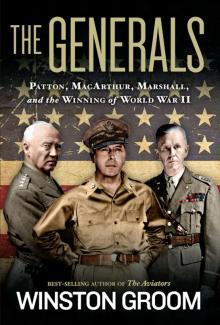 The Generals
The Generals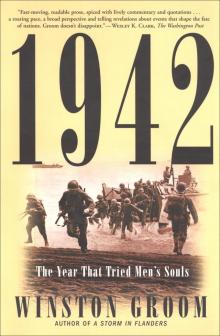 1942: The Year That Tried Men's Souls
1942: The Year That Tried Men's Souls Forrest Gump
Forrest Gump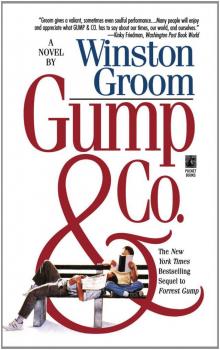 Gump and Co.
Gump and Co.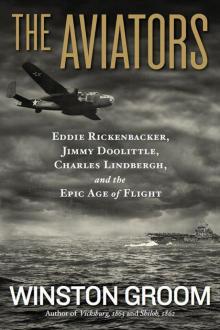 The Aviators
The Aviators Shrouds of Glory
Shrouds of Glory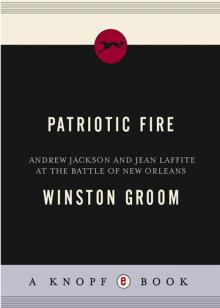 Patriotic Fire
Patriotic Fire Kearny's March
Kearny's March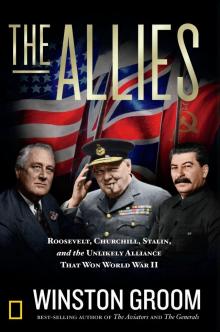 The Allies
The Allies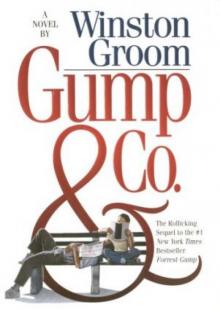 Gump & Company fg-2
Gump & Company fg-2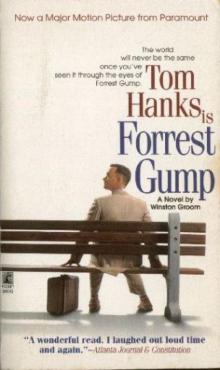 Forrest Gump fg-1
Forrest Gump fg-1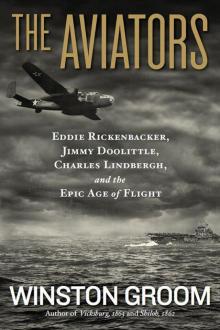 The Aviators: Eddie Rickenbacker, Jimmy Doolittle, Charles Lindbergh, and the Epic Age of Flight
The Aviators: Eddie Rickenbacker, Jimmy Doolittle, Charles Lindbergh, and the Epic Age of Flight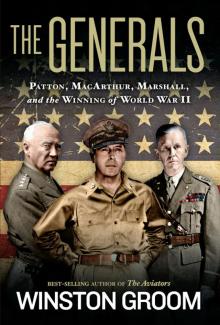 The Generals: Patton, MacArthur, Marshall, and the Winning of World War II
The Generals: Patton, MacArthur, Marshall, and the Winning of World War II